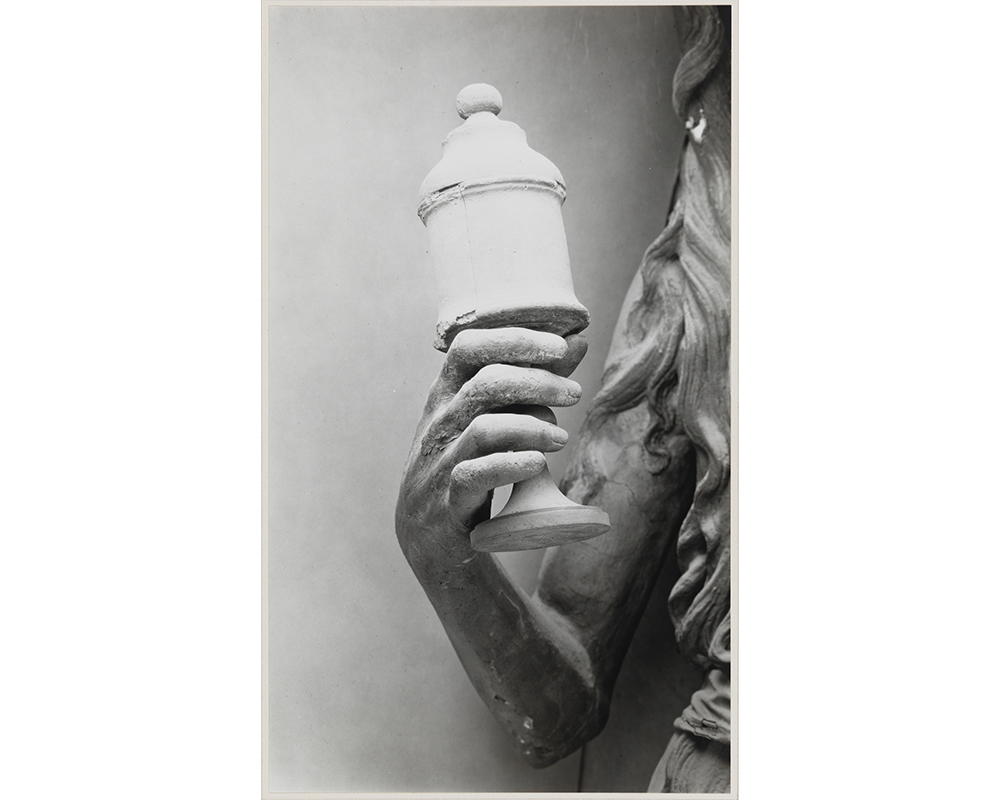
Clarence Kennedy and the Photographical Construct
Colleen McDermott is the Brown Post-Baccalaureate Curatorial Fellow in the Cunningham Center.
Well-regarded as a Renaissance History professor at Smith, Clarence Kennedy began to take photographs of pre-Modern European sculpture to aid his students in their research. During the early 20th century, photography was the primary way of viewing and studying the art of other regions, especially Europe.
What makes his photographs stand out is the unparalleled level of control he had over their staging. Kennedy recognized the importance of treating sculpture as a three-dimensional object, and carefully controlled the lighting and angled at which he took photographs. His work was not about creating something new, but bringing out features of art that are normally unseen.
This images in this post are of the statue of Mary Magdalene at the Santa Trinita in Florence, Italy. The above image is of her right hand, holding a chalice containing ointment. The following three images are all of her left hand, each shot from different angles.
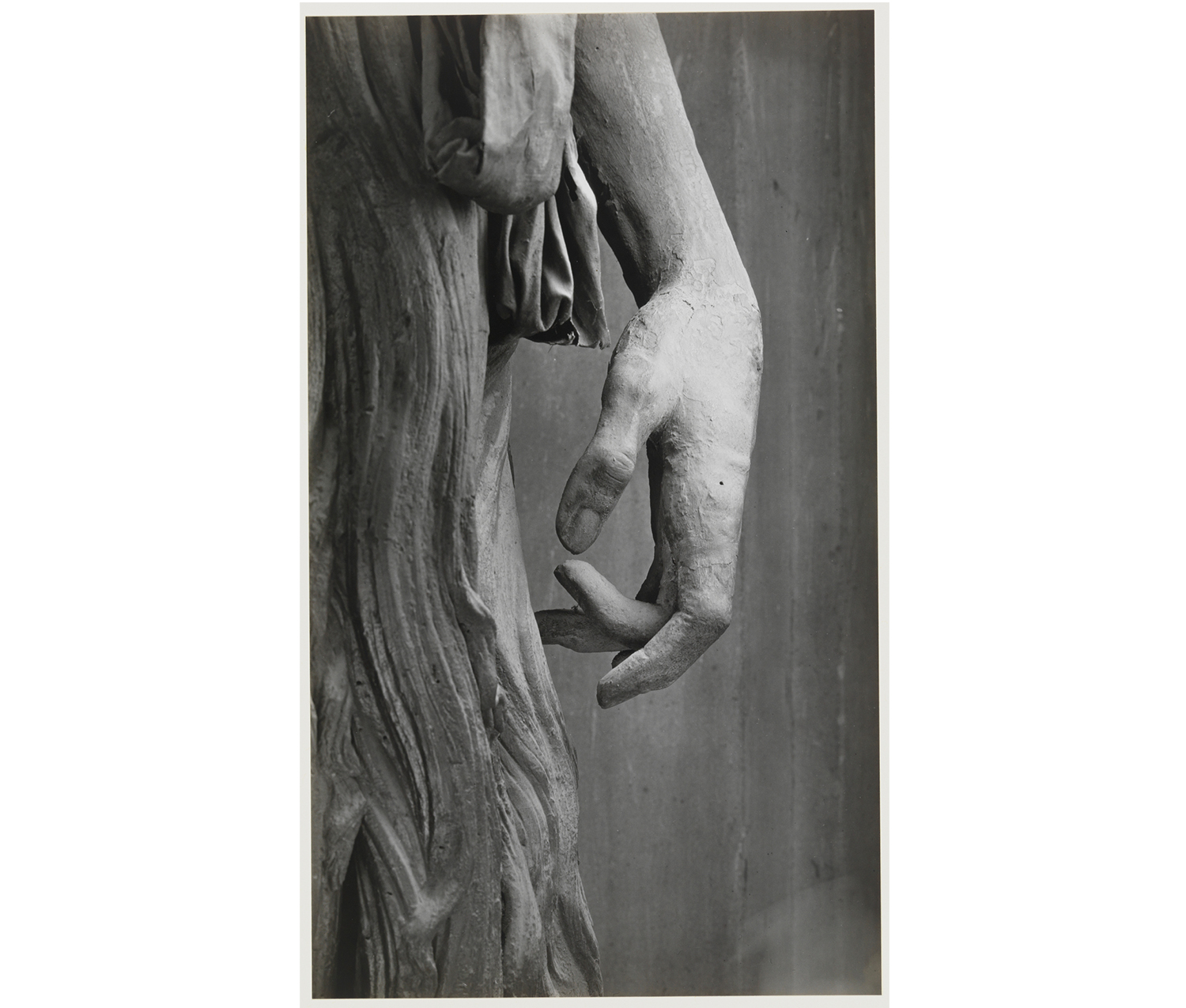
Clarence Kennedy, American, 1892–1972. Plate 42. Her Left Hand. In Profile. The Magdalen. Santa Trinità, Florence. Studies in the History and Criticism of Sculpture, volume VI: The Magdalen and Sculptures in Relief by Desiderio da Settignano, 1929. Gelatin silver print. Gift of the Hillyer Art Library. SC 1976.55.1.42.
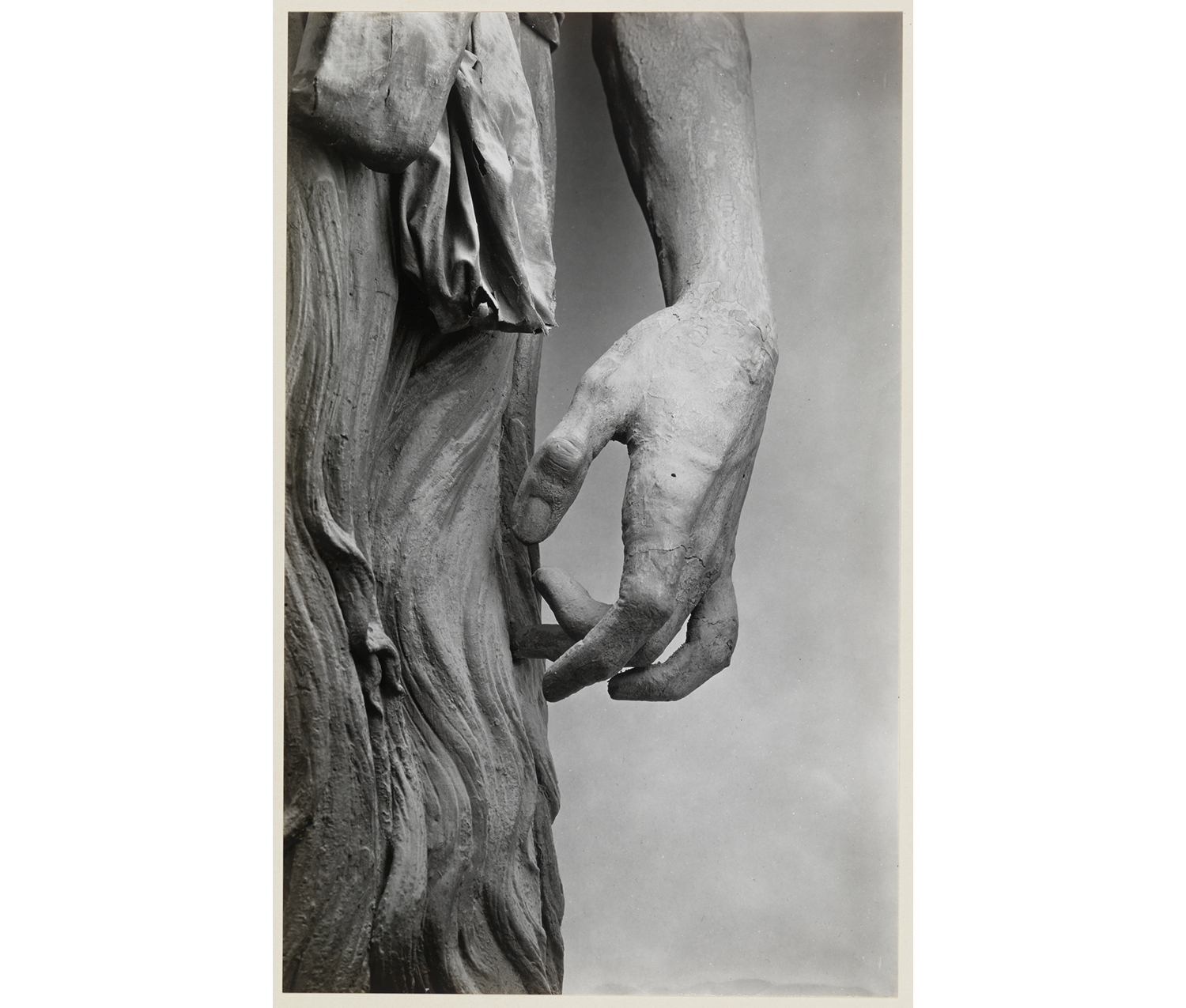
Clarence Kennedy. American,1892–1972. Plate 43. Her Left Hand. Partly Turned from the Observer. The Magdalen. Santa Trinità, Florence. Studies in the History and Criticism of Sculpture, volume VI: The Magdalen and Sculptures in Relief by Desiderio da Settignano, 1929. Gelatin silver print. Gift of the Hillyer Art Library. SC 1976.55.1.43.
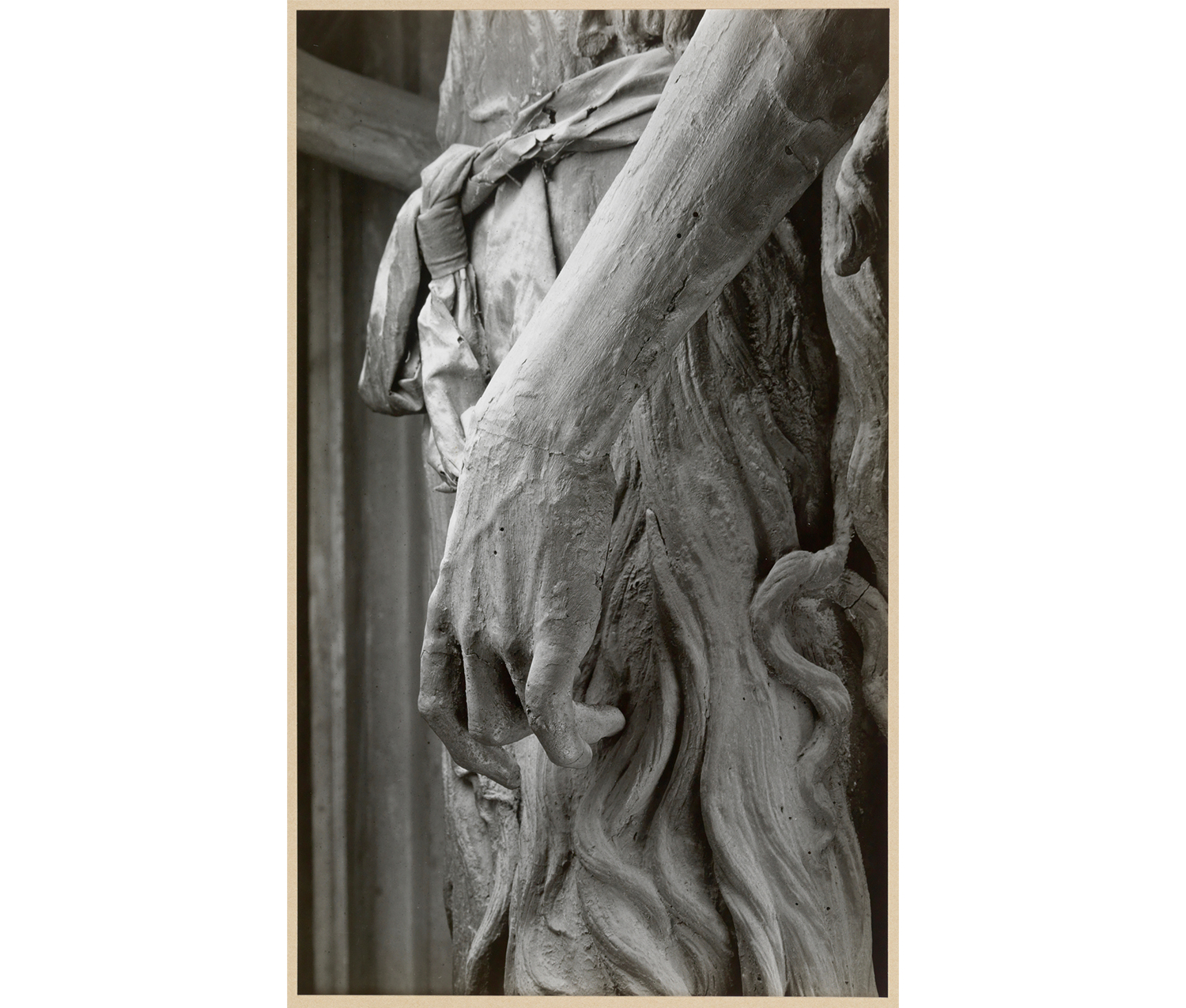
Clarence Kennedy. American, 1892–1972. Plate 44. Her Left Hand. Back. The Magdalen. Santa Trinità, Florence. Studies in the History and Criticism of Sculpture, volume VI: The Magdalen and Sculptures in Relief by Desiderio da Settignano, 1929. Gelatin silver print. Gift of the Hillyer Art Library. SC 1976.55.1.44.
Compare this with the full image of the statue below:
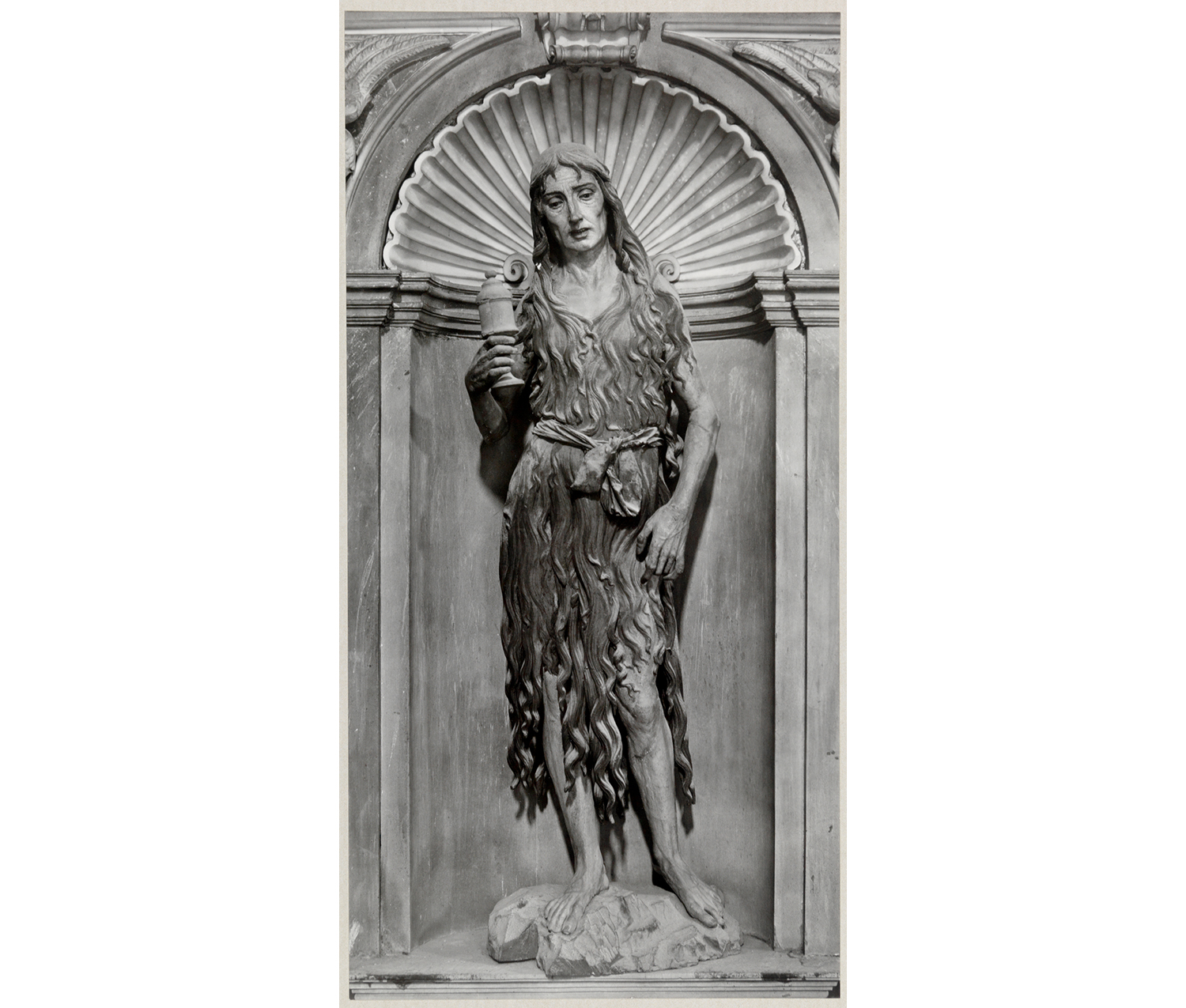
Clarence Kennedy. American,1892 –1972. Plate 33. The Figure as a Whole. The Magdalen. Santa Trinità, Florence. Studies in the History and Criticism of Sculpture, volume VI: The Magdalen and Sculptures in Relief by Desiderio da Settignano, 1929. Gelatin silver print. Gift of the Hillyer Art Library. SC 1976.55.1.33.
It is striking how fundamentally different art photography is today. High-resolution color photography enables us to see every paint chip and wood grain on a sculpture. However, no photographer would be able to work as intimately with the art as Kennedy did--and for good reason. Contemporary thoughts on the conservation and preservation of art mean that works are handled as little as possible. Kennedy’s work is an invaluable resource because it reflects both the art and the circumstances which he worked in.
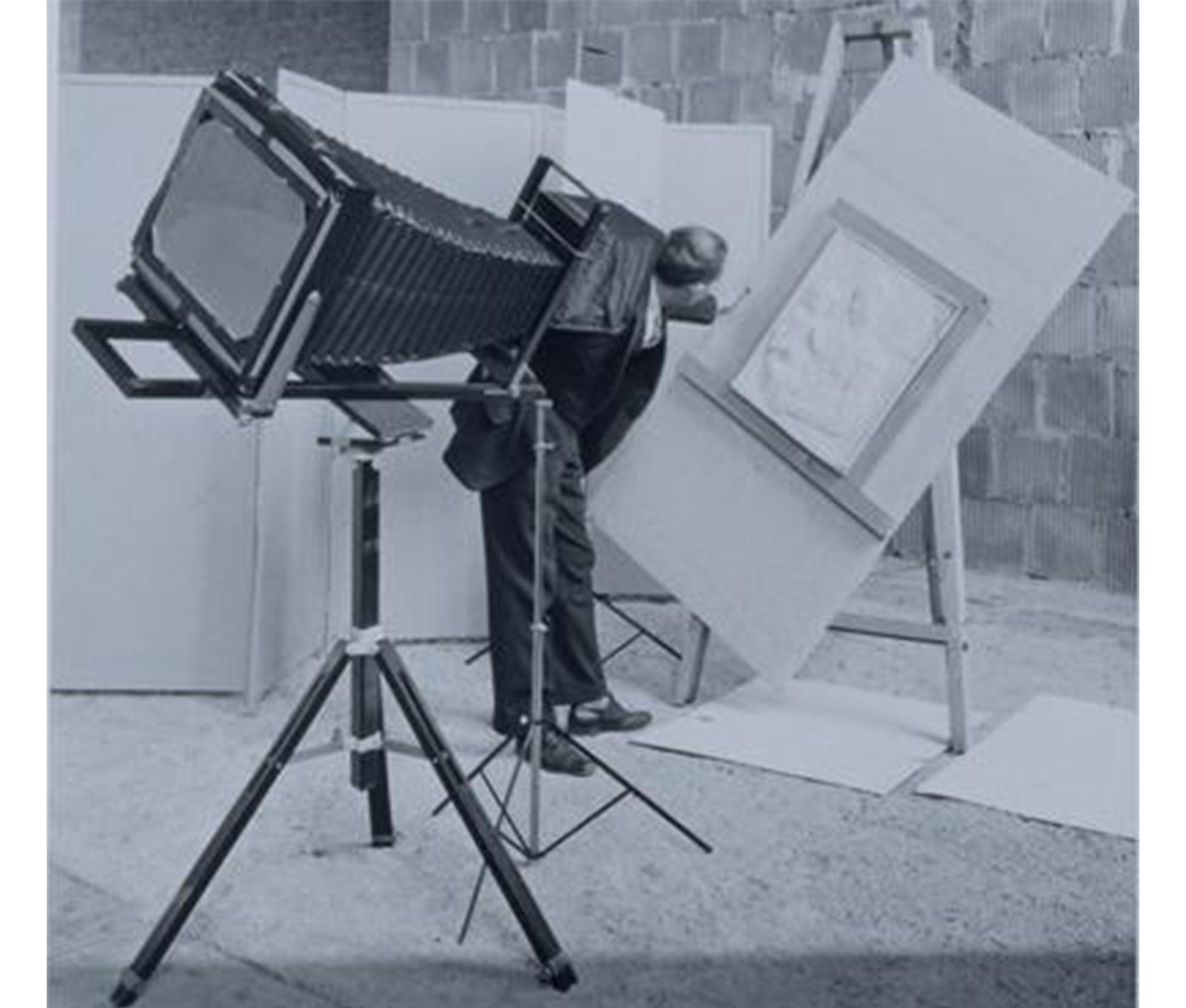
Clarence Kennedy photographing a sculptural relief, c. 1930